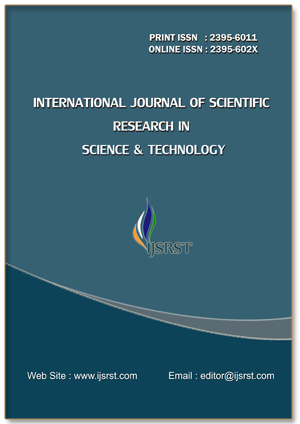Digital Platforms as Catalysts for Innovation in Infection Surveillance and Telemedicine
DOI:
https://doi.org/10.32628/IJSRST2512396Keywords:
Infection surveillance, remote monitoring, public health, mobile health units, e-health, AI diagnosticsAbstract
Digital platforms are playing a transformative role in modern healthcare, especially in expanding access and enhancing the efficiency of medical services. Telemedicine and mobile health (mHealth) technologies have emerged as key innovations, enabling remote diagnostics, consultation, treatment, and monitoring. With real-time data sharing, wearable biosensors, AI-powered diagnostics, and secure video consultations, these technologies are bridging the gap between healthcare providers and patients, particularly in underserved regions. India has been a notable participant in this digital health revolution, launching multiple public and private initiatives since the early 2000s. These include mobile telemedicine units like The Bike Doc, digital clinics, the National Telemedicine Portal, and partnerships with international networks. Government programs such as the Integrated Disease Surveillance Project (IDSP), Village Resource Centres (VRCs), and the AROGYASREE platform exemplify India’s commitment to leveraging digital technologies for public health. Additionally, telemedicine supports infection prevention through electronic monitoring systems, smart EMRs, and machine learning–based decision support tools. Key infection control practices such as PPE use, hand hygiene, and environmental cleanliness are now integrated with digital protocols for better compliance and accountability. Despite infrastructure challenges and limited awareness, telemedicine has shown substantial promise in disaster response, chronic disease management, and education. As wireless technologies and health data standards advance, telemedicine is expected to achieve broader implementation, both nationally and globally, contributing significantly to equitable and resilient healthcare systems.
📊 Article Downloads
References
Siemens Healthineers. Digital platforms in healthcare - Siemens Healthineers. (2023).
Panchbudhe, S. A., Pund, P., Jha, R. K. & Bankar, N. Digital Innovation in Health Care: A Review Article. Ann. Med. Health Sci. Res. 11, 115–117 (2021).
Shende, V. & Wagh, V. Role of Telemedicine and Telehealth in Public Healthcare Sector : A Narrative Review. Cureus 16, 1–7 (2024).
The, I., Diseases, N., Cancer, N., Programme, R. & To, M. Application of Telemedicine in the Management of Cancer., Chp3, 18–37 (2025).
Krupinski, E. A., Antoniotti, N. & Bernard, J. Utilization of the American Telemedicine Association’s clinical practice guidelines. Telemed. e-Health 19, 846–851 (2013).
Division, T. Evolution of Telemedicine in India : Summary. (2006).
Kshatri, J. S. et al. Health research in the state of Odisha, India: A decadal bibliometric analysis (2011‑2020). J. Fam. Med. Prim. Care 6, 169–170 (2022).
WHO. Global strategy on digital health 2020-2025. Geneva: World Health Organization; 2021. Licence: CC BY-NC-SA 3.0 IGO. (2021).
Hso-m, D. N. ACE OVERVIEW FOR NEW AND Overview of Clinical Applications of Telemedicine. (2020).
Technology, I. Telemedicine in India. PP1-7 (2019).
Konopik, J. & Member, G. S. The Impact of Digital Platforms and Ecosystems in Healthcare on Value Creation — A Integrative Review and Research Agenda. IEEE Access 11, 135811–135819 (2023).
Bashshur, R.L., Shannon, G.W., Krupinski, E.A., & Grigsby, J. (2011). The Empirical Foundations of Telemedicine Interventions for Chronic Disease Management. Telemedicine and e-Health, 17(10), 803–808.
Doarn, C. R., & Merrell, R. C. (2011). Spacebridge to Armenia: A look back at its impact on telemedicine in disaster response. Telemedicine and e-Health, 17(7), 546–552. https://doi.org/10.1089/tmj.2011.9990.
World Health Organization. (2010). Telemedicine: Opportunities and developments in Member States: report on the second global survey on eHealth. Global Observatory for eHealth Series - Volume 2. [https://www.who.int/publications/i/item/9789241564144]
Mondal, R. Role of e-health, m-health, and telemedicine or telehealth during the COVID-19 pandemic. nternational J. Community Med. Public Heal. 12, 1531–1540 (2025).
Downloads
Published
Issue
Section
License
Copyright (c) 2025 International Journal of Scientific Research in Science and Technology

This work is licensed under a Creative Commons Attribution 4.0 International License.
https://creativecommons.org/licenses/by/4.0




